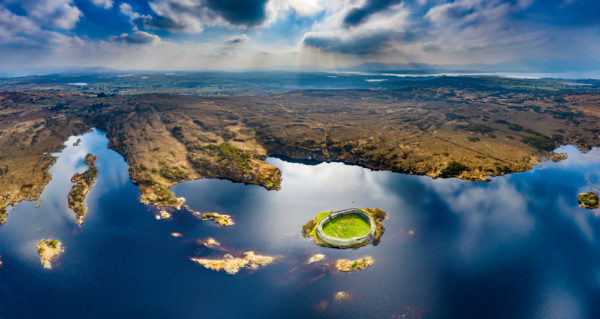
Just as waterfront mansions are status symbols for today’s rich and famous, ancient artificial islands in the British Isles known as crannogs may have been used by elites to display their power and wealth through elaborate parties, a new study finds.
A crannog is “an artificial island within a lake, wetland, or estuary,” Antony Brown of UiT Arctic University of Norway and colleagues wrote in a study published online Wednesday (Sept. 28) in the journal Antiquity. Hundreds of crannogs were created in Scotland, Wales and Ireland, between 4,000 B.C. and the 16th century A.D., by building up a shallow reef or an elevated portion of a lakebed with any available natural material — such as stone, timber or peat — to a diameter of nearly 100 feet (30 meters).
A lot of trade and communication occurred along the lakes and estuaries where crannogs were built. Used as farmsteads during the Iron Age (eighth century B.C. to the first century A.D.), crannogs evolved into elite gathering places in the medieval period (fifth to the 16th centuries A.D.), according to evidence of feasting and plentiful artifacts, such as pottery, uncovered there.
“Writer Fuel” is a series of cool real-world stories that might inspire your little writer heart. Check out our Writer Fuel page on the LimFic blog for more inspiration.

